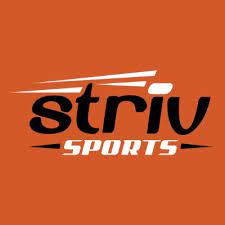Every decision of the Board of Education will be based on what we believe to be best for the students of Fairbury Public Schools.
- STUDENT LEARNING
- Prepare students for College, Career, and Life readiness with rigorous 21stCentury skills as identified locally through the EdLeader 21 initiative.
- Develop instructional strategies to improve student academic achievement as measured by academic achievement scores.
- Continue to show growth and improvement in student achievement results and communicate scores and rankings to parents and community.
- Engage the board in the discussion of district data to ensure their knowledge and understanding of student growth and progress as a result of interventions and strategies.
- Provide the information, support and encouragement parents need to help their children develop optimally during the crucial early years of life.
- Develop a master plan to systematically use technology to customize individual student learning and assessment plans.
- STAKEHOLDER INVOLVEMENT
- Engage students, families, staff, the community, elected officials and other stakeholders in supporting our schools and improving educational outcomes for all Fairbury students.
- Broaden community awareness and advocacy for public education.
- Identify methods to grow the family partnership for those currently not active in the process.
- Model transparency in external and internal communications to ensure understanding of the excellence of FPS and the purpose, rationale, and success of new and existing initiatives.
- Continue community engagement “key communicator” meetings and utilize this input toward the development of a shared vision for the district.
- Survey family perceptions and indicators of satisfaction through an annual on-line instrument.
- RESOURCE STEWARDSHIP
- Ensure the district remains financially responsible while maintaining quality educational programs and facilities for our students.
- Continue to lobby public officials for additional educational funding and ways to address the burden on local taxes.
- Continue to develop and monitor a long-range plan in order to identify and address facility, equipment, and infrastructure needs of the district.
- Develop educational budget information to post in newsletters and on district website and social media outlets.
- Build a 3-4 year budget forecast to identify potential areas of revenue growth as well as areas in which expenditure reductions may be possible.
- INSTRUCTIONAL ENVIRONMENT
- Establish a climate of mutual trust within the Board of Education and among the Board, administration, faculty, staff, community government, district patrons, and community groups
- Attract, retain, and develop high quality teaching and support staff to ensure staff pride, commitment, leadership, and organizational excellence.
- Support district-wide leadership enhancement and efficacy through quality professional development.
- Ensure safe, inclusive and positive learning environments that encourage respect, foster collaboration, and support equity.
- Provide a culture assessment instrument to all staff members to better equip the district with knowledge and understanding of the organizational culture in order to develop an action plan and process to drive culture excellence with proven strategies at both the organizational and team level.
- BOARD GOVERNANCE & OPERATIONS
- Support and encourage appropriate professional development for Board of Education members, administrators, certified staff, and classified staff.
- Define and sustain an on-going policy review process.
- Develop and sustain an annual board calendar to support the assessment and monitoring of goals, efficiency and effectiveness of board leadership through best practice governance in collaboration with the superintendent.
- Review the superintendent evaluation process, protocol, and instrument to ensure appropriate and effective evaluation.
- Make a commitment to a respectful and trusting relationship between the Board and superintendent to support the educational mission and beliefs of the district.
- Utilize a committee meeting agenda and develop brief minutes of committee discussions via e-meetings to inform other board members and the public.
- Exemplify lifelong learning by formalizing ongoing professional development opportunities for board members with a goal of attaining the NASB Outstanding Board Award on an annual basis.
- Take advantage of or organize formal and informal opportunities to network with other Boards of Education.
Student achievement is at the core of all district and Board of Education goals. Students succeed best in an exciting and challenging environment where they are actively engaged in the learning process and supported by parent and community involvement.Educating Tomorrow’s Leaders… Today!


